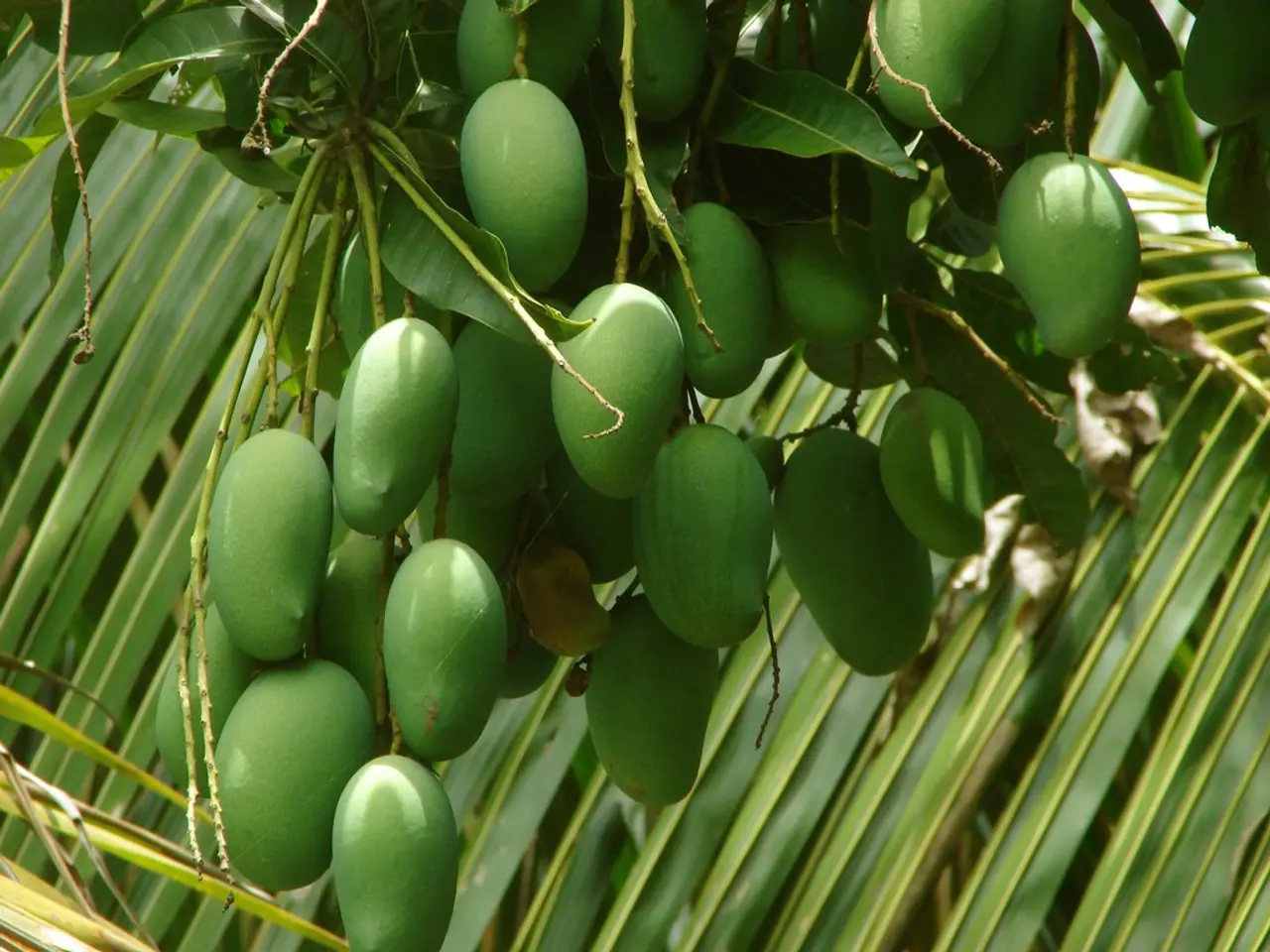Guide for Formulating a Corporate Strategy for a Mango Orchard Operation
In the heart of India's fertile lands, aspiring mango farmers can cultivate profitable and sustainable orchards with a well-structured business plan. Here's a step-by-step guide to help you navigate the process.
1. Market Research and Analysis
Understand the demand, supply, pricing trends, and target customer segments within India and potential export markets. Analyse competitors and opportunities in mango farming to gain insights into the industry's trends, pricing, competition, and demand on both a local and global scale.
2. Site Selection and Farm Planning
Choose suitable land based on soil quality, climate, and irrigation availability. Develop a detailed farm plan considering layout, varieties to plant, planting density, and resource use to maximize productivity.
3. Sourcing Planting Material
Use disease-free, certified nursery stock of hybrid mango varieties to ensure high yield and quality. Align with India's Clean Plant Program initiatives that promote disease-free planting materials.
4. Capital Investment and Cost Estimation
Estimate costs for land preparation, saplings, labor, irrigation systems, fertilizers, pesticides, and machinery. Include costs related to farm establishment, ongoing maintenance, and harvesting.
5. Implementation Timeline
Draft a timeline for land preparation, planting, care, harvesting, and marketing phases.
6. Marketing and Sales Strategy
Plan how to sell the produce—direct to markets, through cooperatives, retail, or exporters. Identify value addition and branding possibilities, such as creating value-added mango products like mango mush, juice, or dried mango.
7. Financial Projections and ROI
Prepare profit and loss forecasts, cash flow analysis, and investment returns over time to attract investors or banks.
8. Risk Analysis and Management
Identify risks such as pests, weather variability, market fluctuations, and propose mitigation strategies.
By following this approach, you can create a well-rounded business plan conducive to sustainable, profitable mango farming in India. This guide is intended for both first-time farmers and those looking to grow their current farms.
Remember, a successful mango farm requires a thorough market study, a clear operational plan, and a solid financial plan. Start with an executive summary, such as "Mango Meadows is a 20-acre mango farm in the fertile soils of Chengalpattu that specializes in growing premium varieties like Alphonso and Kesar."
Operating costs include expenses like water, fertilizer, pesticides, workers, transportation, and advertising. The farming and running the farm section provides detailed information on how to operate the mango farm, including land preparation, tools, and daily tasks.
The business plan estimates potential income by considering the size of the farm, the number of mango trees, and the amount of fruit each tree will produce. Startup costs include expenses like buying or renting land, setting up the farm, buying seeds, fertilizer, tools, and labor.
With this guide, you're well on your way to growing a thriving mango farm in India. Happy farming!
[Article Date: November 28, 2024]
- To ensure the profitable and sustainable success of the organic mango farmland, it's crucial to secure funding through financial institutions or investors by presenting a comprehensive business plan that outlines cost estimations, financial projections, and return on investment (ROI), as well as a marketing strategy for the sale of the produce.
- With an emphasis on environmentally friendly practices, the mango farmland will employ strategies of organic farming, ensuring the use of natural fertilizers and pesticides in alignment with the farm's mission to promote eco-friendly business practices and support sustainable agriculture.




